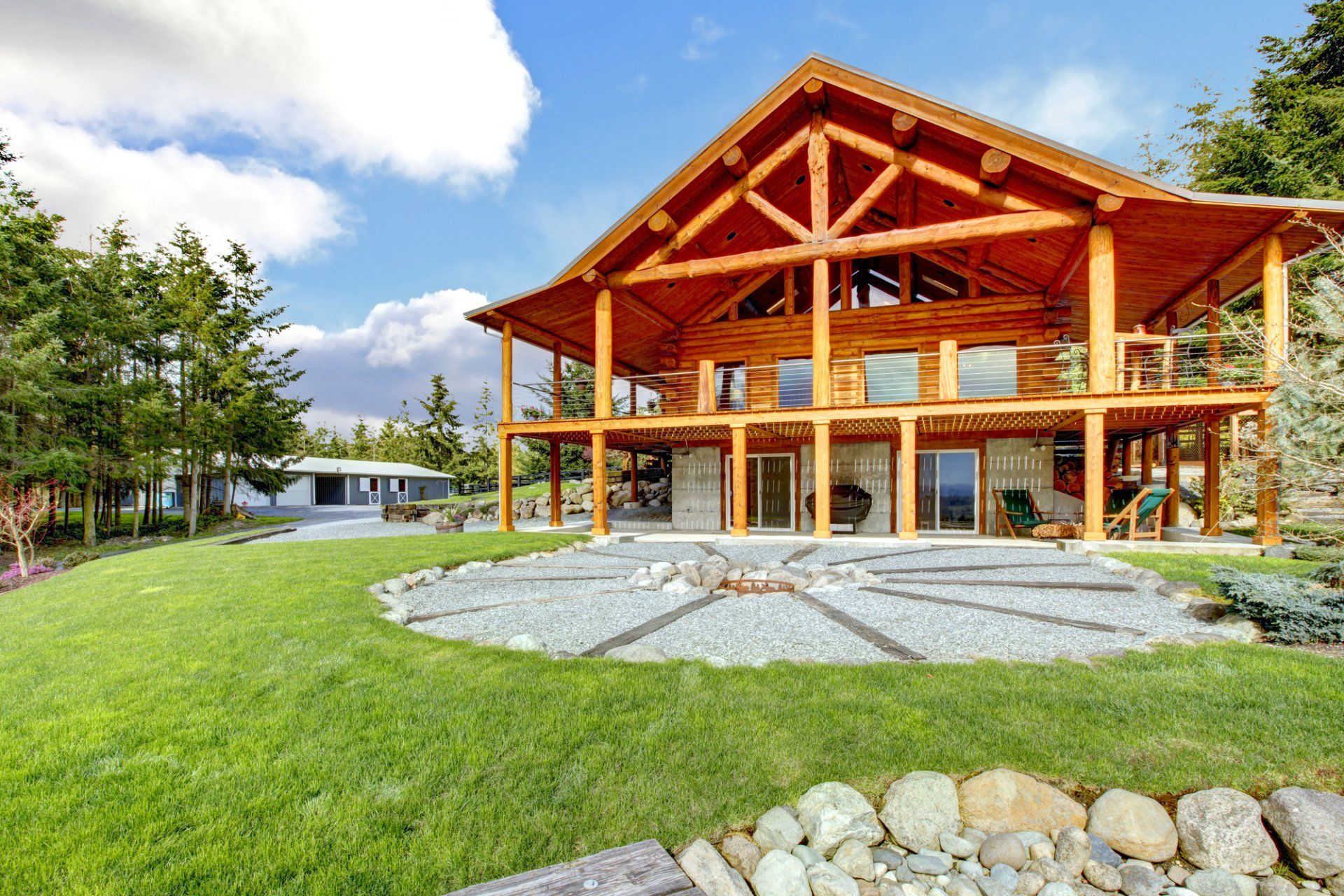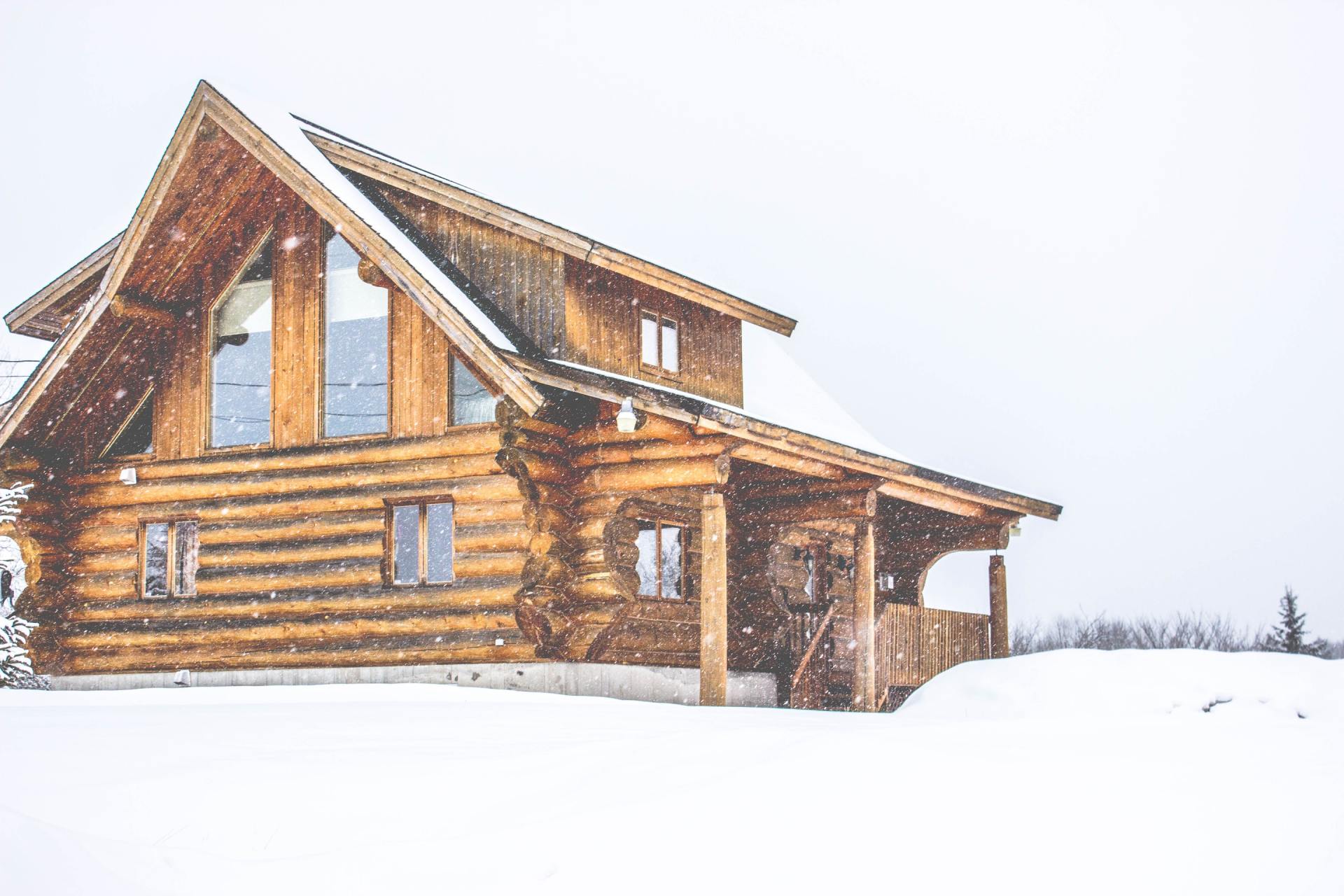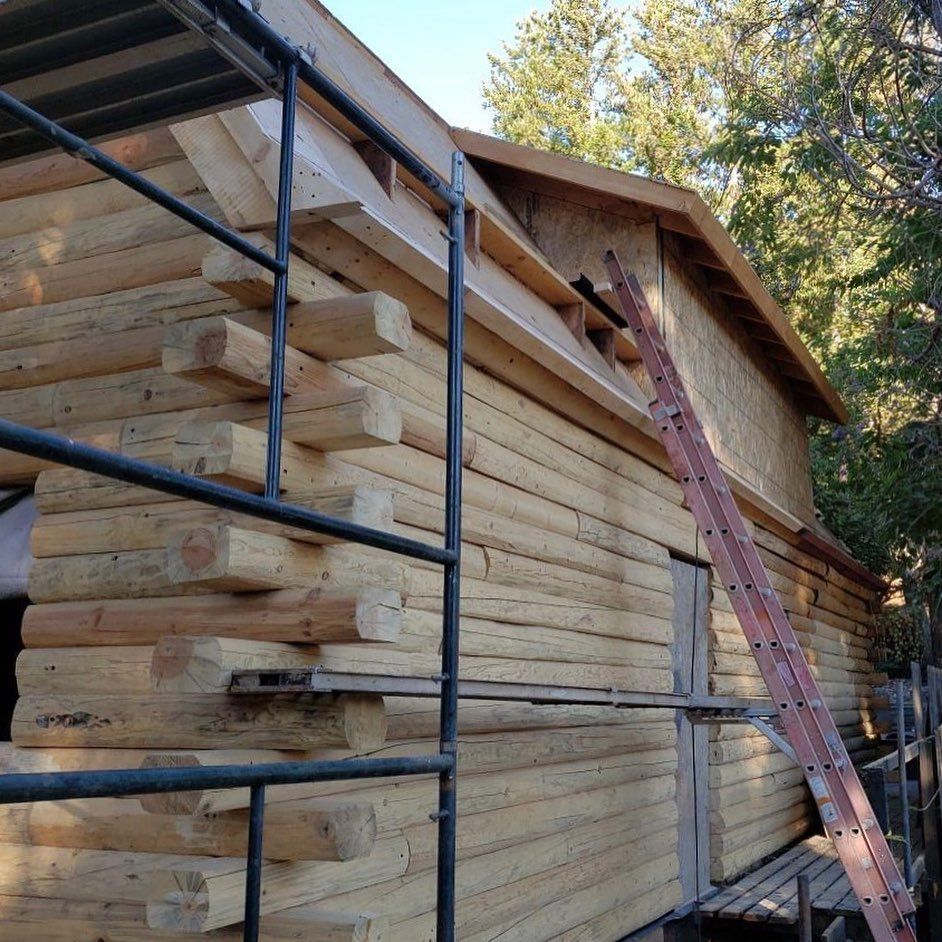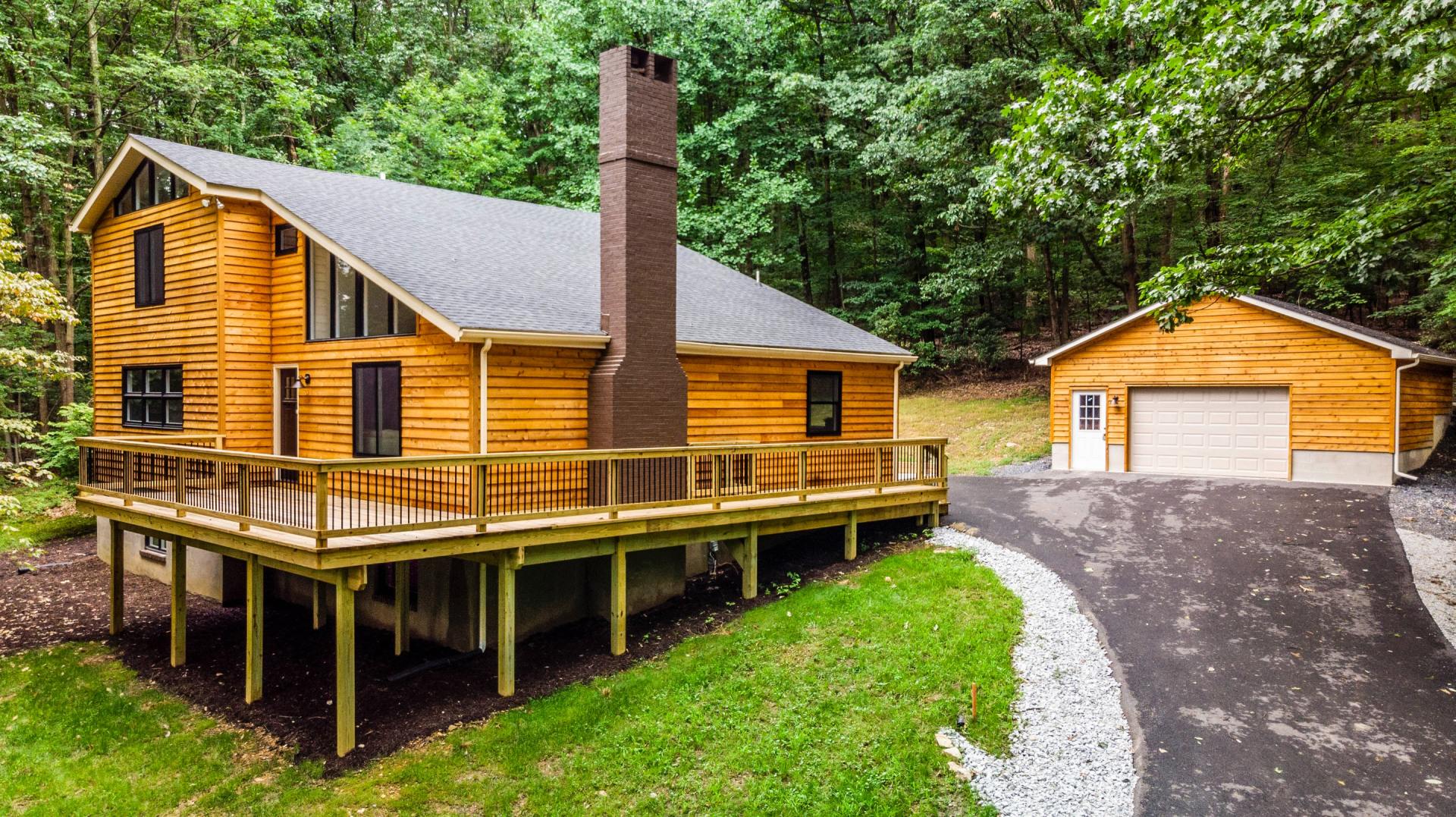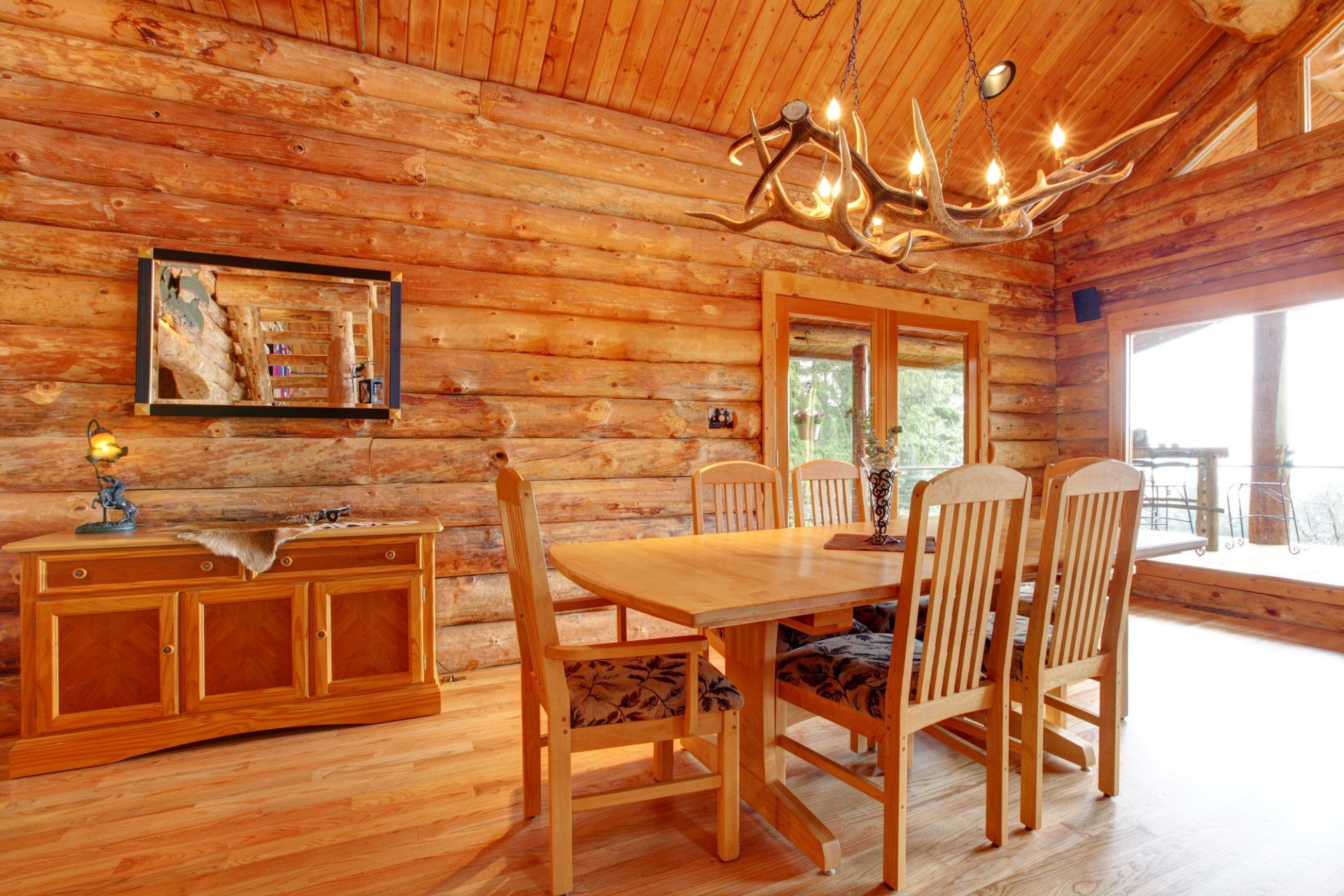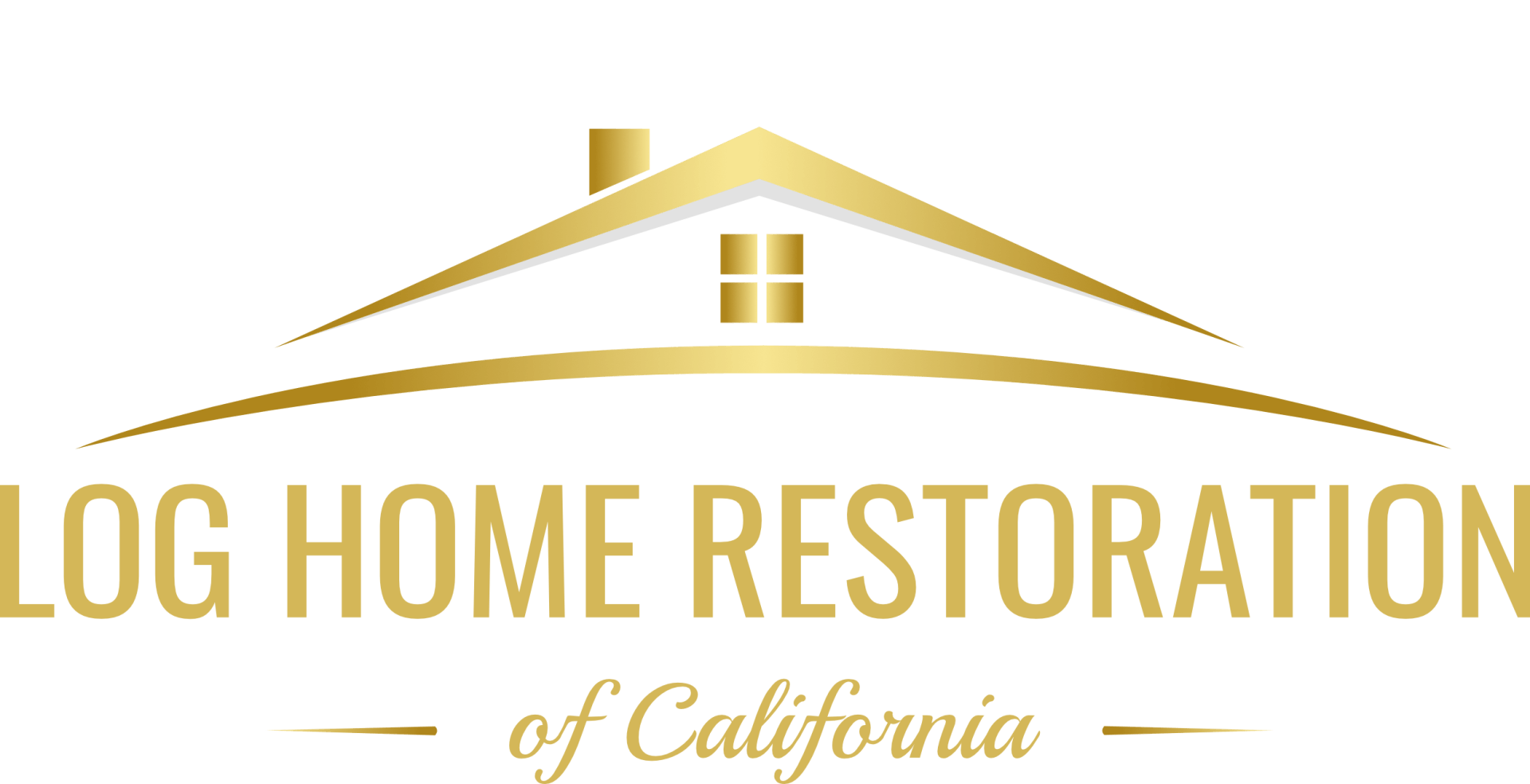What Is The Best Wood For A Lasting Log Home?
Learn the types of wood used for log homes.
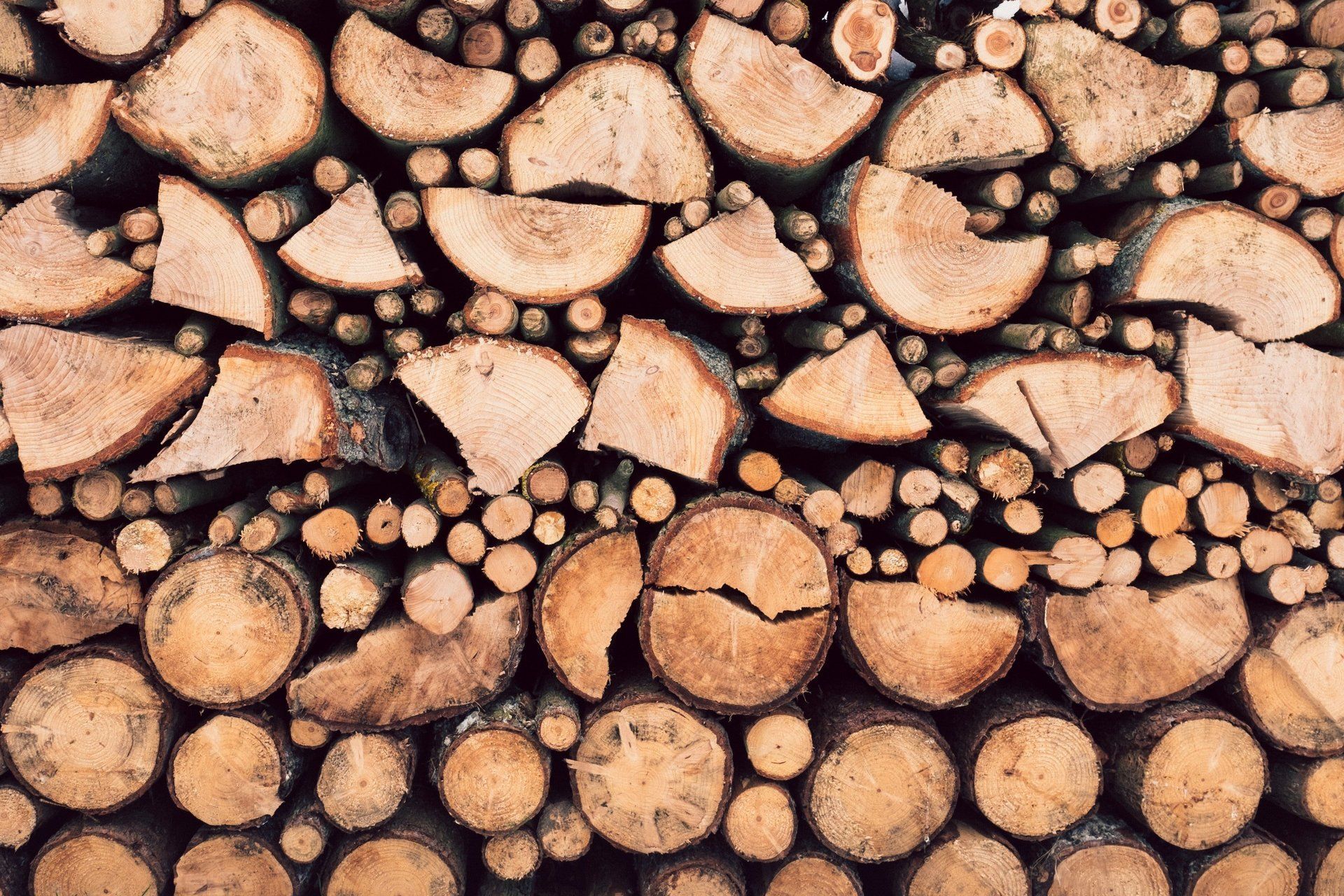
When you are building a new log home, one of the most important decisions is which type of wood to use. This is not a simple choice. The best wood can often be an expensive decision. If you are only looking at the short-term costs. Now, if you look at the lifespan cost, that is a different answer.
There are several factors besides just the wood characteristics that come into play.
Age
This may be one of the most important factors. No matter what type of wood you choose, if the trees are old-growth they have better qualities. When trees grow in tree farms, the wood is pithy and more prone to shrinkage. This will require them to need kiln curing or seasoned for at least 6 months.
Species
Cedars
We know cedars for their natural ability to resist water. It’s resistant to the elements while keeping its integrity. Ideal for outdoor use because of its inherent rot and insect resistance.
Southern White Cedar (Juniper)
- The heartwood is light brown and highly resistant to decay.
- The Sapwood is white.
- Lightweight softwood, which is low strength and shock resistance,
- Low shrinkage
- R-value per inch 1.41
- Scarcer than Northern White Cedar.
Northern White Cedar
- Almost identical to Southern White Cedar.
- R-value per inch 1.41
- Smaller diameters
Western Red Cedar
- The heartwood is reddish or pinkish brown.
- The sapwood is near white.
- Lightweight moderately softwood, which is low strength and shock resistance.
- R-value per inch 1.09
- Very low shrinkage
- Scarce but produces long logs.
Baldcyprus
- Heartwood light yellow-brown to chocolate.
- Sapwood is nearly white.
- Old-growth heartwood is highly decay-resistant.
- New-growth heartwood is moderately decay-resistant.
- Moderate weight, strength, and resistance.
- Moderately small shrinkage
- R-value per inch 1.04
Pines
Properly maintained pine logs are an excellent choice because of its strength and economy. Red pine is stronger than white pines. White pines are more resistant to decay and insects.
Lodgepole Pine
- Heartwood is light yellow to light yellow-brown.
- Sapwood is yellow or nearly white.
- Moderate weight and easy to work.
- Moderately large shrinkage
- Moderately low strength and resistance.
- Low decay resistance.
- R-value per inch 1.20
- Half the shrinkage of other pine varieties.
- Long straight logs available.
Ponderosa Pine
- Heartwood is light reddish brown
- Sapwood is white to pale yellow
- Moderate weight, softness, stiffness,
- Moderately low strength and shock resistance
- Moderately small shrinkage
- Low decay resistance
- R-value per inch 1.16
- Good for dry climates
Red Pine
- Heartwood pale red to reddish-brown
- Sapwood yellowish-white 2 to 4 inches wide
- Moderately heavy, strong, soft
- Moderately high shock resistance
- Moderately large shrinkage
- R-value per inch 1.04
- Easy to dry and secure when seasoned
Southern Yellow Pine
- Heartwood reddish brown
- Sapwood white and very wide in new growth, 1 to 2 inches in old-growth
- Heavy, strong, stiff, and hard
- Moderately high shock resistance
- Moderately large shrinkage
- Stable with proper seasoning
- R-value per inch.91
- Moderate decay resistance
Western White Pine
- Heartwood cream to light reddish-brown
- Sapwood white and 1-3 inches
- Moderate weight, softness, and stiffness
- Low shock resistance
- Moderately large shrinkage
- R-value per inch 1.32
- Easy wood to treat
- Stable and strong
- Economical
Redwood
- Heartwood light cherry to dark mahogany
- Sapwood narrow white
- Moderately lightweight, strength, stiffness, and hardness
- High decay resistance
- R-value per inch 1.0
- Expensive
- Prone to splintering
Douglas Fir
- Sapwood is narrow on old-growth trees
- Sapwood up to 3 inch on new growth trees
- Weight and strength vary depending on where harvested
- R-value per inch.99
- Very strong wood ideal for beams
Western True Fir
- Heartwood and sapwood virtually identical
- Lightweight and high strength
- Shrinkage small to moderate
- Low decay resistance
- R-value per inch.99
- Higher resistance to mildew and fungus
Eastern Hemlock
- Heartwood pale brown-red sapwood a little lighter
- Moderate weight, limberness, hardness
- Moderately low in strength and shock resistance
- Low in decay resistance
- R-value per inch 1.16
- Easy to pressure treat
- Susceptible to wind shake damage
Western Hemlock
- Heartwood and sapwood are almost white with a purplish tint
- Moderate weight, strength, hardness, stiffness, shock resistance
- A moderately high rate of shrinkage
- Low decay resistance
- R-value per inch 1.16
- Difficult because of high shrinkage
Hardwoods
Hardwood is popular for its strength and durability. Walnut, oak,, and poplars are the main choices. The logs are attractive and easy to assemble. The biggest drawback is they can very pricey.
Red Oak
- Heartwood tan to reddish-brown
- Sapwood is nearly white with a width of 1 to 2 inches
- This is a heavy, hard, and tough wood
- Low decay resistance
- Some varieties may have shrinkage problems
- R-value per inch.79
- Limited availability in quantity
- Moderately expensive
White Oak
- Heartwood is golden tan or greyish brown
- Sapwood is nearly white with a width of 1 to 2 inches
- Heartwood has a medium to high decay resistance
- R-value per inch.75
- Expensive to Kiln dry
- Hard to pressure treat
- Beautiful finish
Insect and fungus resistance
When choosing the logs for your home, it is important to pick one resistant to insects and fungus. That is why chemical treatments of the logs are common. While Insects are a problem, it usually attracts them to rotting wood. Fungus will have caused damage before the insects set up housekeeping.
Heartwood
Sapwood is the new growth in the logs, whose responsibility is transporting water throughout the tree. As new rings grow, it transforms the inner rings into heartwood. This central, strong pillar is the heartwood of the tree. Though heartwood is dead, it does not decay. For as long as the outer layer, the bark and sapwood are intact, the heartwood stays strong.
When the sapwood matures into heartwood, it fills the pores with organic matter. The chemicals (extractives) cause the heartwood to change color. This creates the rich color and characteristics of heartwood.
This heartwood is less susceptible to fungus. Heartwood also contains far less moisture and will have less shrinkage when dried. It increases the strength of the fibers.
Seasoned or kiln-dried
Seasoned logs are left out to dry for 6 month or longer this will reduce the water content from an average of 50% for green wood to <25%. This drying will cause some shrinkage. While left out to dry the wood can be exposed to both fungus and insects.
Kiln-dried logs are heated in huge ovens for about 1 week. This will reduce the water content to less than 20%. There is also a consistency between the logs. They are not exposed to fungus and insects.
Soft or hardwood
Hard wood and softwood have some very strong differences. First soft woods have a better R-Value. This makes it easier to meet the insulation requirements most states have. Hardwoods have more strength and a wonderful finish. They have worse insulation properties, so must be of higher diameters to meet the requirements.
The other factors is that of cost, hardwoods are very expensive and difficult to get in quantities need for log homes.
Availability
Availability, different woods are available only in certain regions
Eastern and Northeastern
- White pine
- Red Pine
- Eastern white cedar
South Eastern
- White pine
- Yellow pine
- Cypress
Central
- White pine
- Yellow pine
- Eastern white cedar
- Oak
- Poplar
- Walnut
Western and Northwestern
- Western red cedar
- Spruce
- Fir
- Hemlock
- Ponderosa
- Lodgepole pine
Supply and demand apply to log home builders. They must purchase the raw logs and factor transportation into their costs. So most log homes are made of pine.
Log Home Restoration of California
Log Home Restoration of California, Inc. has decades of experience in handling almost all choices for logs. We can help guide you into finding just the right wood for your job.
